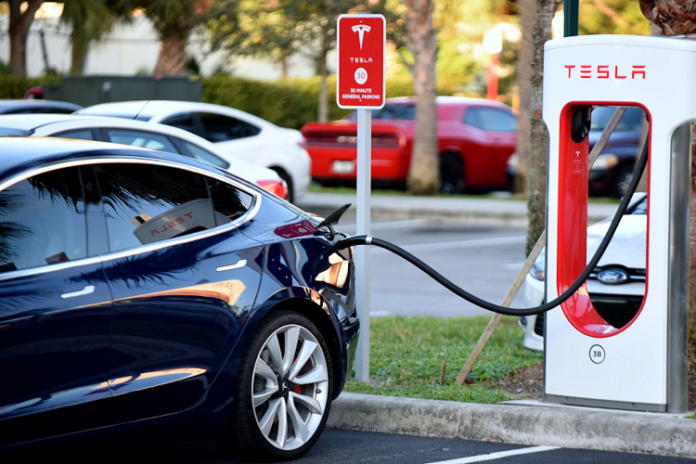The EV technology of vehicle to grid is a compelling narrative that will recolonise the grid system in myriad ways. The grid is the most complex system that works quietly in the background and is only noticed when it stops working. Vehicle to Grid is essentially the ability of a Tesla or other EV to supply electricity back to the grid. Bi-directional Tesla charging allows charge to go in and out depending on the conditions. Put simply, this technology allows Tesla EV’s to become mobile batteries that can store and supply energy to grid when needed the most. By having the ability to reduce the peaks and troughs of the grid system, reducing the strain on the grid leading to an improved longevity. This is particularly important as renewable energy plays an increasing role in energy generation. Coupled with reduced cost for end customers.
The current concept is still present in the textbooks but it is slowly starting to be introduced in EV’s. The current predicament for Vehicle to Grid system is hypothesised to accelerate battery degradations. However new reports from EV technology world is starting to tilt, as the technology evolves with more R&D and awareness for the concept. Tesla has made giant leaps by introducing Bi-directional charging in the Model 3 architecture. The current Model 3 uses a CCS2 plug standard which is unconventional charging port that is difficult to integrate with V2G technology. CHAdeMO charging port supports V2G capabilities. Tesla’s engineers have managed to reverse engineer allowing the onboard battery inverter to change battery’s DC to AC. The most interesting concept about Teslas charging Vehicle to Grid capability is that Tesla’s engineers have managed to seamlessly integrate the inverter into the Tesla charger. This potentially allows EV owners to use their ordinary chargers to be able to convert Tesla Model 3 into a huge battery. Using a Type 2 charger for a 3-phase system, the vehicle will allow traditional household electronic goods to be energised including AC, dishwashers and cooking.
Tesla is leading the EV industry and has the ability to innovate and integrate drastic technology and it becomes a norm for other car manufacture to create in their cars. Several car manufactures like Nissan and Honda have also been deploying Bi-directional charging stations.
As the aggregate EV’s increase, the V2G capabilities will improve in its effectiveness to support the grid in times of excess demands. From a wholesale electricity market perspective, the future grid services will be rapidly changing. Tesla’s vehicle battery technology combined with Tesla Charging will be superior compared to standard power wall. Coupled with the standby time of EV’s as a ratio to driving time highly plays into the feature of V2G technology. For now, the technology is in the early phases of its implications. The avenues for accelerating towards renewables are wide open, V2G is just another mere contributing option, it is still too early to predict whether V2G will be the knockout punch.













